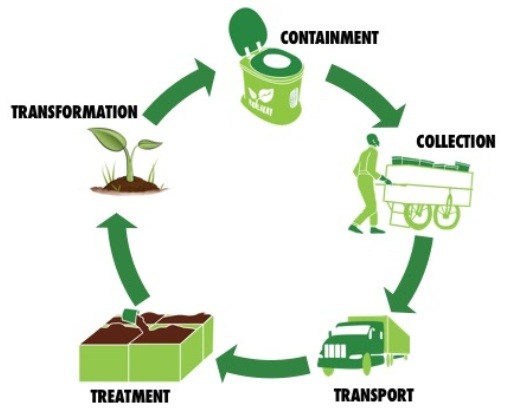
Conservancy system
In this system, various types of refuse and stormwater are collected, conveyed and disposed off separately by different methods in this system. This method is also called a dry system and is in practice since very ancient times. This is method is adopted in small towns, villages and undeveloped portions of the large cities even it is out of date system. In this method garbage or dry refuse is collected from the dustbins and conveyed by trucks or covered carts once or twice a day. All the incombustible portions such as sand, dust, clay, ashes etc. are used for filling low lying areas and combustible portions such as dry leaves, waste paper, broken furniture etc.… are burnt. The decaying fruits, vegetables, grass are first dried and then disposed of by burning or in the manufacture of manure. Human excreta or night soil is collected in separate liquid and semi-liquid wastes by animal drawn carts, trucks or tractor trailors and buried in trenches. After 2-3 years the buried night soil is converted into an excellent manure which can be used for growing crops. In this system sullage and storm water are also carried separately in closed or open drains upto the point of disposal, where they are allowed to mix up with streams, rivers or sea.
Advantages
- Initial cost is low, because storm water can pass through open drains.
- The quantity of sewage reaching at the treatment plant before disposal is low.
- The sewer section is small and no deposit of silting because storm water goes in open drains
Disadvantages
- The possibility of stormwater may mix with sewers causing a heavy load on the treatment plant.
- In crowded lanes, it is difficult to lay two sewers or construct drains roadside causing great inconvenience to the traffic.
- More land is required for human excreta.
- Liquid refuse may get on access to the subsoil and pollute the underground water.
- The aesthetic appearance of the city cannot be increased.
- Decomposition of sewage causes insanitary conditions which are dangerous to public health.
- This system completely depends upon the mercy of sweepers at every time and may possibility of spreading of diseases in the town if they are on strike.
Water Carriage System
In this system, the excremental matters are mixed up in the large quantity of water and are taken out from the city through properly designed sewerage systems where they are disposed off after necessary treatment in a satisfactory manner. The sewage so formed in water carriage system consists of 99.9 percentage of water and 0.1 percentage of solid matters. All the solid matters remain in suspension in the sewage and do not change the specific gravity of water. So all the hydraulic formulae can be directly used in the design of sewerage systems and treatment plants. This system is universally used nowadays because of the following advantages.
Merits and demerits of water carriage system
Merits
- It is a hygienic method because all the excremental matters are collected and conveyed by water only.
- There is no nuisance in the streets of town and the risk of epidemics is reduced because of the underground sewerage system.
- Less space is occupied in the crowded lanes as only one sewer is laid
- Self-cleaning velocity can be obtained even at fewer gradients due to more quantity of sewage.
- The land required for the disposal work is less as compared to the conservancy system.
- This system does not depend on manual labour at every time except when sewers get choked.
- The usual water supply is sufficient and no additional water is required in water carriage system.
- Sewer after proper treatment can be used for various purposes.
Demerits
The main disadvantage of this system is the wastage of water (99.9% of water).
- This system is very costly in the initial cost.
- The maintenance of this system is also costly.
- During monsoon large volume of sewage is to be treated compared to the remaining period of the year.
